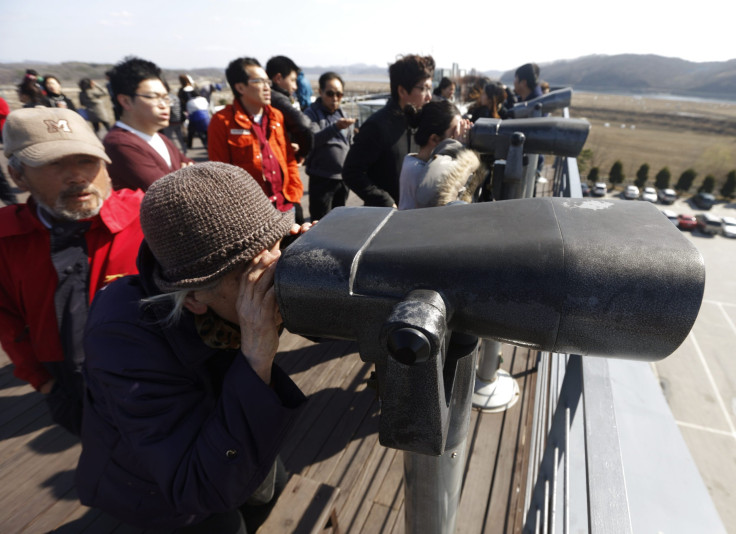South Korea Raises Surveillance Alert Level; Says Pyongyang Can Launch Missile Any Time

South Korea said on Wednesday that North Korea is prepared to launch a mid-range ballistic missile from its east coast “at any time,” even as the South Korea-U.S. Combined Forces raised their alert level to increase surveillance monitoring.
South Korean Foreign Minister Yun Byung-se told a parliamentary hearing that intelligence reports obtained by the U.S. and South Korea indicated a “very high possibility” of Pyongyang launching a missile, Seoul’s Yonhap news agency reported.
“The Musudan missile has a range of 3,500 kilometers (2,100 miles) and it is up to North Korea how far it would fly,” Yun said.
Japan and the U.S. territory of Guam are within the strike range. South Korea can be reached by the North's short-range Scud missiles.
North Korea unveiled the indigenous Musudan missile during a military parade in 2010 but has not tested it yet, according to a BBC report. However, there are reports that the missiles may have been sold to Iran and tested there.
Yun said South Korea has asked China and Russia to help restrain North Korea and ease the tensions that have been escalating since Pyongyang was condemned by the U.N. Security Council for a nuclear test it conducted in February.
“Through close coordination with China and Russia, the Korean government has been continuing to make efforts to persuade North Korea to change its attitude," Yun told lawmakers.
Separately, an initial investigation by South Korea into a major cyber attack last month that affected a number of banks and broadcasters found that many of the malignant codes employed in the attacks were similar to ones used by the North previously, said Lee Seung-won, an official at the South Korean science ministry.
The March 20 attack severely affected the KBS, MBC and YTN broadcasters and operations at the Shinhan, NongHyup and Jeju banks.
This is the first time that Seoul has officially held Pyongyang responsible for a cyber attack.
In the wake of Pyongyang ratcheting up tensions, the South Korea-U.S. Combined Forces raised their alert level to Watchcon level 2, indicating vital threat.
The new alert level is just below the highest Watchcon status, alert level 1, used during wartime.
Watchcon level 3 denotes important threat, while level 4 is used during peacetime.
Despite a series of threats to wage war against its southern neighbor and the U.S., there has been little indication from Pyongyang of military movements involving its 1.2 million-strong army, Reuters reported.
© Copyright IBTimes 2024. All rights reserved.












